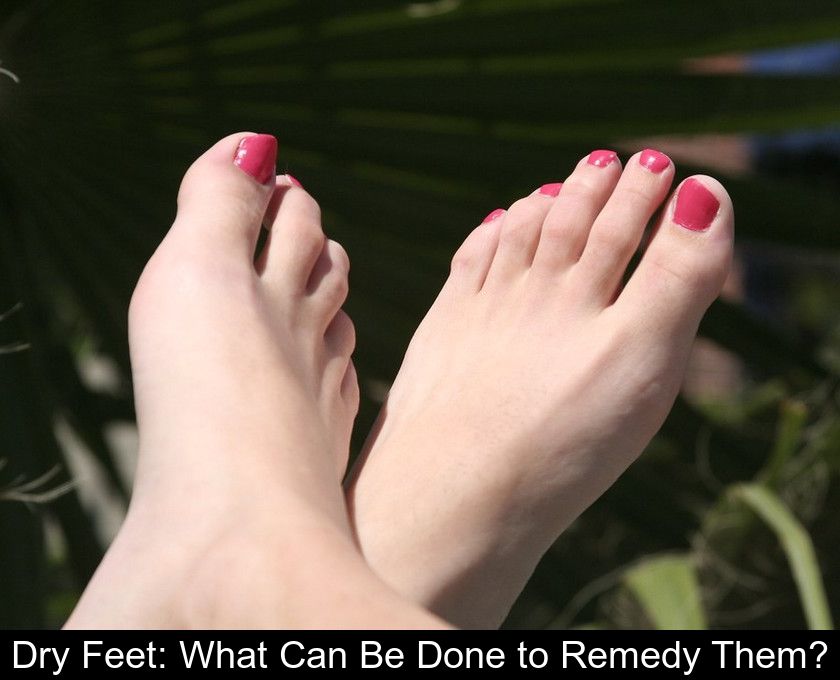Dry Feet: What Can Be Done To Remedy Them?
It's usually in the spring, when we take out open shoes like sandals or flip-flops from the closet, that we discover the dry condition of our feet. If you suffer from dry feet, with cracked heels and fissures, we're going to explain what you need to do to remedy this.
Why do we have dry feet?
We are not all equal when it comes to the issue of dry feet, as some people have drier skin than others. If your feet tend to develop calluses and cracks, you must be particularly careful and provide them with appropriate care.
Among the causes of dryness in the feet, we can also mention:
• the dry cold of winter that dries out the skin.
• orthopedic problems and foot deformities that increase the load on a single area and promote the thickening of the skin in certain places.
• aging, because the skin tends to dry out as we get older.
Why do heels crack?
Even though the problem of dry feet is exacerbated by the cold in winter, cracked heels can occur all year round. In this particular area of the foot, the skin dryness and fissures are due to friction with the ground.
If you tend to walk barefoot or in flip-flops during summer, the direct contact of your foot with the hot sand explains why your heels are damaged. It is not surprising that the skin eventually dries out and cracks since we take an average of 7000 steps per day.
Not only is the foot a part of the body that is heavily used on a daily basis, but it also lacks sebaceous glands in the sole of the foot. These glands produce sebum, which protects the skin. On the feet, the skin is naturally less hydrated because the lipid film is less substantial.
What can be done to prevent dry feet?
The first tip to avoid dry feet does not concern the choice of your beauty products but rather the choice of your footwear. Flip-flops and any shoes that are not attached at the heel promote cracks. Be careful with slides! They earn their name because the sole slaps against the heel with every step!
To avoid these small impacts that damage the skin, it is better to wear sandals with straps, preferably made of leather. Synthetic materials are not recommended for shoes or socks as they encourage perspiration. Yet, sweating worsens dryness in the feet. If you wear sneakers or hiking shoes in the summer, choose breathable models and cotton socks.
In terms of cosmetics, avoid soaps and shower gels containing sulfates. Prefer beauty products with a simple and natural composition, ideally superfatted soap or replenishing shower oil. To not exacerbate skin dryness, also avoid using very hot water and taking foot baths too often.
As a preventive measure, regularly check the condition of your feet and apply moisturizing cream as soon as you notice signs of skin dryness. Podiatrists even advise applying a moisturizing cream to the feet daily to strengthen the famous hydrolipidic film that protects the skin from drying out.
How to treat dry feet?
To treat dry and damaged feet, a simple moisturizer is not enough. You need to choose the composition of the cream based on the condition of your feet:
• if your feet have calluses in certain areas, it is best to apply a cream with urea to the thickened skin.
• if you walk a lot, opt for a very moisturizing cream with an anti-friction effect.
Regardless of the type of cream chosen, note that you must apply it at least once a day for the remedy to be effective.
If your cracks are painful or if your feet have painful calluses such as corns and bunions, the best solution is to consult a podiatrist to remove all the dead skin. It is more difficult, and even dangerous, to do it yourself because some areas of the foot are not very accessible.
At home, avoid using blades or scrubbing the skin with a rasp or pumice stone every day. The pumice stone should be used once a week at most. If you do it more often, you worsen the problem of dryness and thickening of the skin because you remove its lipid film. The moral of the story: it's better to moisturize your feet every day rather than scraping them!













